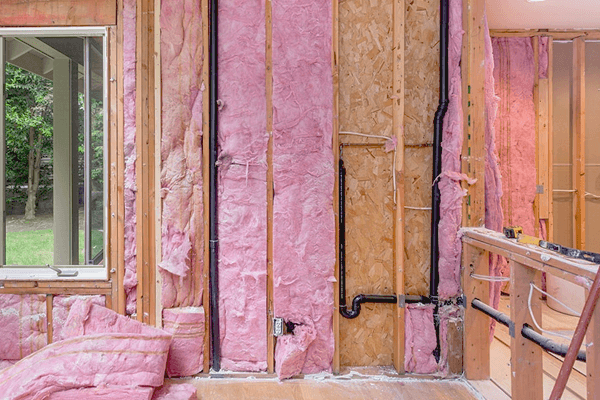Your home’s insulation is what keeps your family warm, safe and comfortable in winter. It also keeps heat out in the summer, maintaining cooler interiors without spending a lot of energy on air conditioning. If your home doesn’t have enough insulation, cold drafts will blow through during the winter, leaving you with high energy bills.
It will also be harder to maintain a comfortable temperature in summer when the heat is getting through. With the rising cost of heating and cooling, insulation can help reduce energy expenses. You could even qualify for tax credits if you add more insulation to your home. Is it time to work on your home’s insulation? Find out here.

Contents
Your Furnace Keeps on Breaking Down
When you don’t have adequate insulation, heat escapes from your home in winter, and it gets harder to cool the space during the summer months. This causes your HVAC unit to work harder to maintain comfortable temperatures, wearing it out faster. It will constantly run and break down often. You’ll also realize problems such as overheating, dirty filters, and ineffective thermostats. Consider replacing your furnace if it’s beyond repair.
Ask for advice from a professional for better ways to insulate your house. The furnace will not have to work as hard, prolonging its life and preventing costly breakdowns.
Your Heating Bill Keeps Spiking
Your heating bills could be consistently high during the winter, but a lack of insulation makes it even worse. Heat escapes from your home, causing the furnace to work non-stop. Insulation keeps temperatures within a comfortable range, so the heating system doesn’t have to run as often.
When you don’t have enough insulation, your heating costs will skyrocket and lead to a huge electricity bill. An expert can inspect your insulation and let you know if it’s time to replace or repair it. Your heating bills will be reduced, making your energy expenses manageable again.
You Get Chilly Drafts Inside Your Home
Without adequate insulation, your home can get very drafty in winter. You’ll feel chilly drafts blowing through your home, which can be uncomfortable. The draft will cause the furnace to work harder, leading to overheating and less efficiency.
Note that cold air will seep in easily through cracks and openings if you have older windows. Your home will also be hot and stuffy in the summer because of a lack of insulation. If you experience any signs, such as chilly drafts or an uncomfortably warm house, it’s time to look into adding more insulation.
High-Temperature Variations
When experiencing high-temperature variations in different rooms, it can make your home uncomfortable, and you’ll spend more money to keep the temperature steady. Insulation evens out temperature variations in your home, making it more comfortable.
When you realize your home’s temperature changes depending on weather conditions outside, it’s time to work on your home’s insulation. Cold or hot air drafts will come in through gaps in different areas, making some rooms uncomfortable. Think of weatherization measures such as applying insulation to your attic, basement and floors.
Cold Walls, Floors and Ceilings
The walls, floors and ceiling should stay warm no matter the weather conditions outside. Insulation helps maintain constant temperatures within your home so you and your family can feel comfortable. If the wall is cold to the touch, add more insulation. The same goes when the floors feel chilly or uncomfortable walking barefoot.
Just like walls, floors and ceilings, your windows should be warm to the touch as well. The cold glass is an indication of heat loss. Another sign it’s time to work on the insulation is if the dishes in your cabinets are cold. Grabbing a cold mug on a winter morning is the last thing you want to do when getting ready for work, so insulate your home to keep it warmer.
Leaks In the Attic
Poor insulation lets air escape from your home, which causes leaks in the attic. When your house isn’t adequately insulated, hot air will rise to the top and exit through your roof, causing it to be drafty.
The hot air leak also lets cold air through small cracks and openings into the attic. It leads to temperature drops, meaning the furnace will work harder throughout the day, causing your energy bills to spike. You’ll start noticing tiny ice crystals on the beams, indicating water leaks.
Freezing Water Pipes
When the temperature drops, water in pipes could also freeze and cause damage to your home’s structure when they burst. Insulating the pipes prevents them from freezing during the winter and ensures a constant water supply.
Besides this, when ice dams form on the rooftop, it means some of the heat is escaping through the ceiling and roof. There is no more heat loss as long as the insulation is correctly installed and there are no leaks in the attic.
A Pest Infestation
Bugs, mice and other pests take shelter in your home through openings or gaps in the insulation. Termites, roaches, and rodents like to nest in warm places. Insulating your home prevents pest infestations because the insects will find it hard to get in.
If they come inside, you’ll have to deal with more than just pest infestations; you’ll also have to worry about them spreading germs and causing health problems. The pests such as rodents can also deteriorate the insulation when they nest in it.
Your Insulation Is More Than 15 Years Old
The insulation in your home keeps on shrinking, causing inadequate thermal protection over time. Fiberglass and cellulose settle, and if your home is exposed to the elements, it can cause insulation breakdown and damage.
If you can see rafters in your attic, it means the insulation is not sufficient. Additionally, codes keep changing, which means that older homes might not meet the latest standards and insulation requirements.
Fix the Problem
Now that you realize your home’s insulation is inadequate, the next step is to fix it. Before starting, understand your home’s structure and the best insulation methods to use. Only then can you solve energy loss issues and improve your home’s functionality and curb appeal. You’ll reduce energy consumption by up to 20% with adequate insulation, so contact a professional for an assessment if you think it’s time for new insulation in your home.
